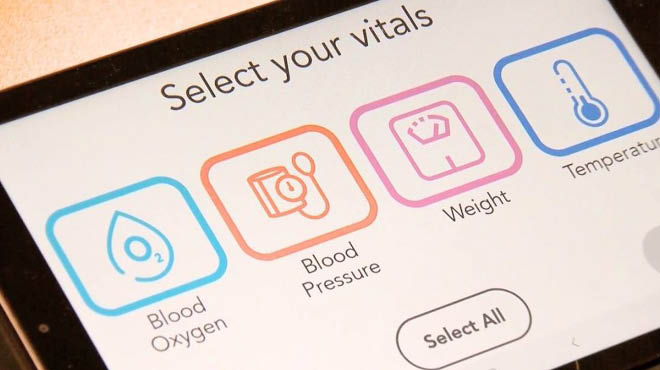Exploring the Wellness Monitor: A Comprehensive Guide

Understanding the Concept
1. Defining Wellness Monitor:
A wellness monitor is a comprehensive tool used to track and assess various aspects of an individual’s well-being, including physical health, mental wellness, lifestyle habits, and environmental factors. It provides valuable insights into overall health status and helps individuals make informed decisions to optimize their well-being.
2. Holistic Approach:
Unlike traditional health monitors that focus solely on physical health metrics such as heart rate and blood pressure, a wellness monitor takes a holistic approach, considering multiple dimensions of wellness, including emotional, social, and environmental factors.
3. Personalized Insights:
One of the key features of a wellness monitor is its ability to provide personalized insights based on individual data and preferences. By tracking trends and patterns over time, users can gain a deeper understanding of their unique health needs and make targeted interventions for improvement.
Components of a Wellness Monitor
1. Physical Health Metrics:
A wellness monitor typically includes measurements of physical health metrics such as heart rate, blood pressure, body temperature, and oxygen saturation levels. These metrics provide valuable information about cardiovascular health, respiratory function, and overall physiological well-being.
2. Activity Tracking:
Many wellness monitors feature activity tracking capabilities, allowing users to monitor their daily steps, distance traveled, calories burned, and active minutes. This helps individuals gauge their level of physical activity and set goals for increasing movement and exercise.
3. Sleep Monitoring:
Sleep monitoring is another essential component of a wellness monitor, enabling users to track their sleep duration, quality, and patterns. By analyzing sleep data, individuals can identify factors that may impact sleep quality and make adjustments to improve restorative sleep.
Advanced Features
1. Stress Management Tools:
Some wellness monitors offer stress management tools, such as guided breathing exercises, mindfulness meditation, and stress tracking features. These tools help individuals recognize and manage stress levels, promoting relaxation and mental well-being.
2. Nutrition and Hydration Tracking:
Nutrition and hydration tracking features allow users to log their food intake, track macronutrient consumption, and monitor hydration levels. By maintaining a balanced diet and staying adequately hydrated, individuals can support optimal physical and mental health.
3. Environmental Sensors:
Advanced wellness monitors may include environmental sensors that measure air quality, temperature, humidity, and UV exposure. By monitoring environmental factors, users can create a healthier living environment and minimize exposure to potential health hazards.
Benefits of Using a Wellness Monitor
1. Increased Self-Awareness:
Using a wellness monitor promotes self-awareness by providing real-time feedback on various aspects of well-being. By monitoring physical health metrics, activity levels, sleep patterns, and lifestyle habits, individuals can identify areas for improvement and make positive changes to their daily routines.
2. Motivation and Accountability:
Wellness monitors serve as powerful motivational tools, inspiring individuals to stay active, prioritize sleep, and make healthier choices. By setting goals, tracking progress, and receiving feedback, users feel a sense of accountability and are more likely to stick to their wellness goals.
3. Prevention and Early Intervention:
By monitoring key health metrics and detecting abnormalities or changes over time, wellness monitors can help identify potential health issues early on. Early intervention allows individuals to take proactive measures to prevent or manage health conditions before they escalate.
Considerations for Choosing a Wellness Monitor
1. Compatibility and Connectivity:
When selecting a wellness monitor, consider compatibility with your existing devices and connectivity options. Choose a monitor that seamlessly integrates with your smartphone or computer and offers convenient data syncing and analysis features.
2. Accuracy and Reliability:
Accuracy and reliability are critical factors to consider when choosing a wellness monitor. Look for monitors with validated sensors and algorithms that provide accurate measurements and consistent performance across different environments and conditions.
3. User-Friendly Interface:
Opt for a wellness monitor with a user-friendly interface and intuitive navigation features. The monitor should be easy to set up, customize, and use on a daily basis, ensuring a seamless user experience.
Integrating Wellness Monitoring Into Daily Life
1. Establishing Routine:
Incorporate wellness monitoring into your daily routine by setting aside time each day to track your health metrics, log activity, and review insights. Consistency is key to gaining meaningful insights and making sustainable lifestyle changes.
2. Setting Realistic Goals:
Set realistic and achievable goals based on your individual health needs and preferences. Whether it’s increasing daily steps, improving sleep quality, or reducing stress levels, establish SMART goals that are specific, measurable, achievable, relevant, and time-bound.
3. Seeking Professional Guidance:
While wellness monitors provide valuable insights into overall health and well-being, it’s essential to consult with healthcare professionals for personalized advice and guidance. Discuss your wellness goals, monitor data, and any concerns with your healthcare provider to develop a comprehensive wellness plan.
Conclusion: Harnessing the Power of Wellness Monitoring
In conclusion, a wellness monitor is a valuable tool for tracking and optimizing various aspects of well-being, including physical health, mental wellness, lifestyle habits, and environmental factors. By providing personalized insights, promoting self-awareness, and facilitating goal setting and accountability, wellness monitors empower individuals to take control of their health and make informed decisions to enhance their overall quality of life. Whether you’re looking to improve fitness, manage stress, or prioritize sleep, integrating wellness monitoring into your daily routine can pave the way for a healthier, happier, and more balanced life.
